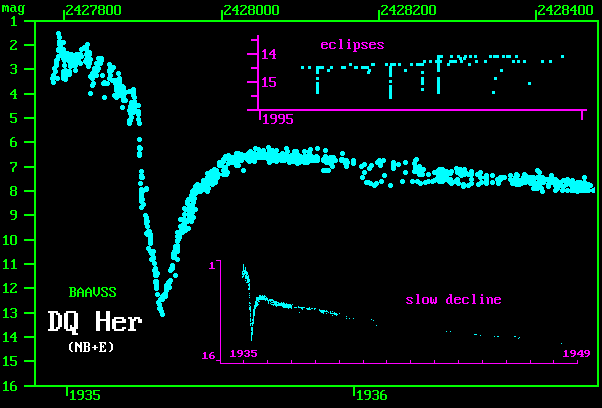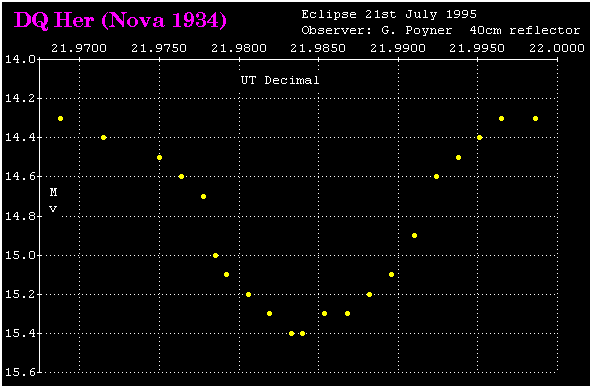
Nova Herculis 1934 was discovered by Manning Prentice - then Director of the BAA Meteor section - on the night of December 12th at magnitude 3.4 following a long session observing meteors. The nova peaked 9 days later at magnitude 1.5. A slow fade followed, with the nova losing 3 magnitudes in 94 days (t3=94d), followed by a more rapid decline of 8 magnitudes in just one month. DQ Her then brightened once more to reach a second fainter maximum of 6.5, which was then followed by a long slow decline to minimum. A similar pattern can be seen in the light curve for Nova Cas 1993 (V705 Cas).
DQ Her is now known to belong to the group of CVs known as Intermediate Polars. These binary systems consist of a red star and fast rotating (72 seconds for DQ Her) highly magnetic white dwarf, whose orbital periods lie above the period gap (>3h). Intermediate Polars resemble their close cousins the AM Her type stars in many ways, except that the latter are spin/orbit synchronised, and generally have shorter orbital periods which prevents the formation of an accretion disk.

|
Observers 1934 to 1936:- C.J.M.Aanensen, F.Addey, J.R.Bazin, A.F.Bennett, J.H.Bridger, C.F.Butterworth, J.P.M.Cables, H.Cobb, E.H.Collinson, W.T.Gayfer, F.M.Holborn, A.King, O.J.Knox, W.M.Lindley, O.D.Macnamara, H.Pain, B.M.Peek, E.L.Phillips, T.E.R.Phillips, J.P.M.Prentice, G.O.Rawstron, W.L.Shepherd, H.Simmons, C.J.Spencer, W.H.Steavenson, H.Thomson, W.J.R.Waterfield, H.Webber. |
 Lasse Jensen CCD (JPG ~30Kb) |
